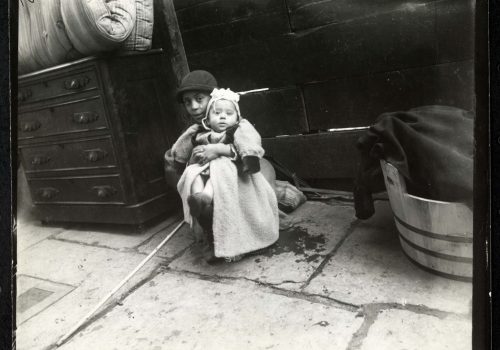In 1870, the Danish immigrant Jacob Riis (1849-1914) arrived in New York aged twenty-one and penniless. This background stimulated his concern for the poor living conditions of inhabitants of the city’s Lower East Side. In time, his concern propelled him to become an important journalist and social reformer. In addition, he is now viewed as one of the founders of documentary photography.
Riis used the camera as a means to help improve the living conditions of the city’s destitute. He was eager to apply the latest developments in the still young medium of photography and used his photographs as powerful illustrations for his lectures, articles, and books. During his lectures – a kind of ‘TED Talk’ avant la lettre – Riis would project the images using a magic lantern (a stereopticon). This made his lectures very popular, and by 1900 Riis had become a celebrated writer, journalist and public speaker who knew how to move influential friends such as Theodore Roosevelt (the later president of the United States), Andrew Carnegie and Booker T. Washington to implement reforms.
However successful Riis’s social efforts were, his photographs did not attract much attention for themselves. The technology to reprint them in books was still far from perfect, and photograph was often used as the basis for drawings. The interest in his photographs started to grow after the Second World War, and it was only in 1946 – many years after his death – that the Museum of the City of New York organized the first major exhibition of his images.
The Other Half – The Activist Photography of Jacob Riis, an exhibition currently on view at Foam Museum in Amsterdam, comprises vintage photographs by Riis and his contemporaries, prints from 1946 and more recent prints from 1994. It also includes a magic lantern as used by Riis during his lectures and a number of personal belongings such as his notebook. A beautiful tribute to a man full of convictions and brilliant ideas.
The Other Half – The Activist Photography of Jacob Riis
February 16 to April 15, 2018
FOAM Museum
Keizersgracht 609
1017 DS Amsterdam
Netherlands
















